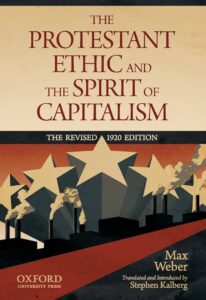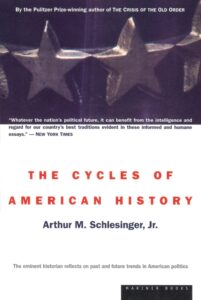Table of contents
Objectives and Theoretical Foundations of Tariff Policy
Implementation and Consequences of Trump's Tariff Policy
Political and Economic Debates
Future Prospects
During Donald Trump's presidency, his tariff policy became an integral part of the global economy, leading to large-scale trade wars and the restructuring of global supply chains. This policy aimed to protect American industry, though its long-term effects remain a subject of debate.
One of the cornerstones of Donald Trump's presidential campaign was his promise to revitalize American industry and preserve jobs, which he believed were hindered by "unfair" international trade agreements and unfair trade practices by other countries. The Trump administration quickly turned to tariffs as a primary tool to achieve this goal. Tariffs are essentially taxes imposed on imported goods, designed to make foreign products more expensive and increase the competitiveness of domestic production. The main target of Trump's policy was China, against which tariffs were imposed on billions of dollars worth of goods. Additionally, tariffs also affected allies such as the European Union, Canada, and Mexico, particularly on steel and aluminum imports, justified by national security concerns. The Trump administration's main argument was that tariffs would force other countries to negotiate and enter into fairer trade agreements. This policy, often referred to as a "trade war," had a serious impact on the global economy, increasing uncertainty and hindering international trade.
Objectives and Theoretical Foundations of Tariff Policy
Trump's tariff policy pursued several key objectives, based on the economic theory of protectionism:
- Protecting domestic production and preserving jobs: Trump's primary motivation was to protect American manufacturers from cheap imports, especially from China. His argument was that low import prices led to the closure of American companies and job losses. Tariffs aimed to make imported goods more expensive, making domestic products more competitive.
- Reducing the trade deficit: The US has long had a trade deficit with many countries, especially China. Trump believed this deficit was a sign of weakness in the American economy and aimed to reduce it through tariffs, by decreasing import volumes and encouraging an increase in American exports.
- Changing other countries' "unfair" trade practices: The Trump administration accused China of intellectual property theft, forced technology transfer, subsidies, and other trade barriers that created unfavorable conditions for American companies. Tariffs were seen as a tool of pressure to force China to change its practices.
- National security: Trump imposed tariffs on steel and aluminum, even from allied countries, citing national security. His argument was that dependence on other countries for these strategic materials threatened the US defense industry.
Implementation and Consequences of Trump's Tariff Policy
Trump's tariff policy was implemented in several stages, leading to both expected and unexpected consequences:
- Tariffs on solar panels and washing machines (January 2018): These were Trump's first large-scale tariffs, aimed at strengthening domestic production of these products in the US. As a result, solar panel imports decreased, but American manufacturers could not fully meet demand, leading to increased costs for solar energy projects.
- Tariffs on steel and aluminum (March 2018): Trump imposed a 25% tariff on imported steel and a 10% tariff on aluminum, affecting not only China but also US allies. This led to international tension and retaliatory tariffs on US exports. While some American steel mills benefited, consumers and steel-dependent industries (e.g., automakers) experienced price increases.
- Trade war with China (2018-2020): This was a central part of Trump's tariff policy. The US imposed tariffs on hundreds of billions of dollars worth of Chinese goods, ranging from electronics and textiles to agricultural products. China retaliated with tariffs on American goods, including agricultural products, which severely harmed American farmers. The trade war led to the restructuring of global supply chains, increased inflation in some sectors, and economic uncertainty. Although a "Phase One" agreement was reached in 2020, in which China pledged to increase purchases of American products, many key issues remained unresolved.
- Tariffs on other countries: Trump also imposed tariffs on other countries, such as the European Union (on aircraft, wine, and other products) and Turkey (on steel). These actions were often used as a tool for diplomatic pressure.
The results of the tariff policy were complex:
- American industry: Some domestic manufacturers, such as steel companies, saw short-term benefits as their competition became more expensive. However, other industries that use imported components suffered from increased costs. The large-scale job growth that Trump predicted did not materialize.
- Consumers: Tariffs increased the prices of imported goods, which ultimately burdened American consumers.
- International trade: Tariffs led to a decrease in global trade volume and uncertainty regarding trade rules. Companies began restructuring supply chains to avoid tariffs, which is a lengthy process.
- Foreign relations: Trump's tariffs damaged US relations with many allies, leading to distrust and retaliatory measures.
Political and Economic Debates
Trump's tariff policy sparked widespread political and economic debates.
Supporters argued that tariffs were necessary to restore American industry, protect jobs, and combat China's "unfair" trade practices. They believed that Trump succeeded in holding China accountable and forcing it to make certain concessions. Also, the argument was that short-term pain was necessary for long-term economic security.
Critics, on the other hand, argued that tariffs harmed American consumers through increased prices, hindered international trade, damaged the US's reputation as a reliable trading partner, and failed to achieve the desired results in terms of job creation and trade deficit reduction. Many economists warned that tariffs are an ineffective tool for solving economic problems and often lead to retaliation, ultimately a losing proposition for all parties.
Trump's tariff policy clearly demonstrates how complex and multifaceted international trade issues are. Its long-term impact on the American economy and global trade still needs to be assessed. The Joe Biden administration, while not lifting all of Trump's tariffs, has sought a more coordinated approach to addressing trade issues, collaborating with allies.
Future Prospects
Despite his departure from the presidency, Trump's tariff policy continues to have a long-term impact on the global economic landscape. Under a future presidency (e.g., if Trump returns to power), the principles of his tariff policy are likely to be reactivated. This includes:
- "America First" principle: Trump will continue to view trade as a priority that serves US domestic interests, even if it conflicts with international norms or the interests of allies.
- "Universal Baseline Tariff": Trump's floated idea of imposing an approximately 10% "universal baseline tariff" on imported goods, if implemented, would significantly alter global trade. This would lead to price increases in the US, retaliatory tariffs from other countries, and even further restructuring of global supply chains.
- "Reshoring" supply chains: Trump will continue to urge American companies to bring manufacturing back to the US ("reshore") and reduce dependence on foreign, especially Chinese, supply chains. This would require significant investments in domestic production and could lead to more expensive products.
- Continued confrontation with China: US-China trade relations are likely to remain tense, with tariffs and other trade barriers actively employed.
Against the backdrop of current global economic instability, inflation, and geopolitical tensions, the potential renewal of Trump's tariff policy would pose serious challenges to the world economy. It will require strategic planning and adaptation from governments, businesses, and international organizations.








